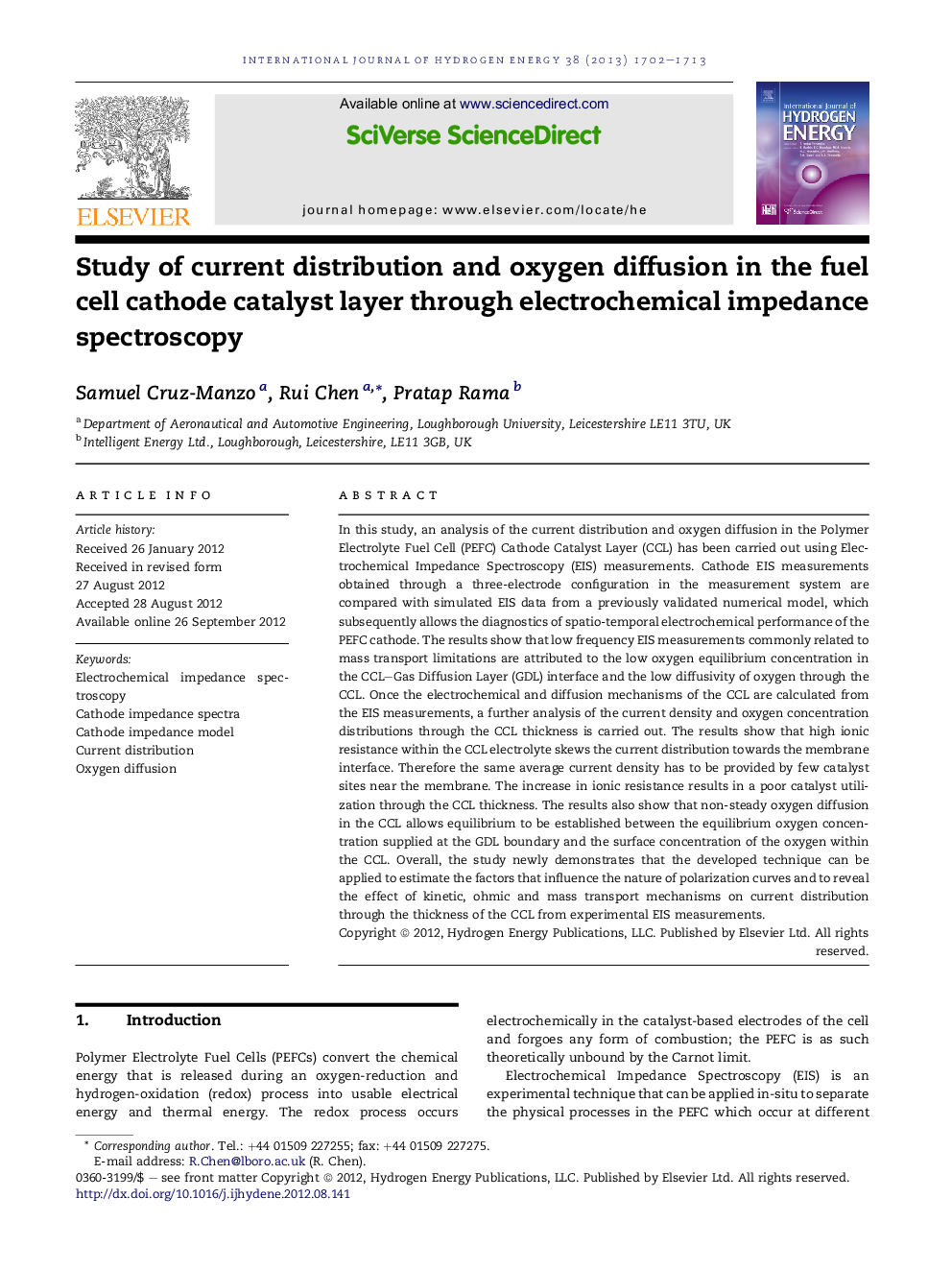| Article ID | Journal | Published Year | Pages | File Type |
|---|---|---|---|---|
| 1275959 | International Journal of Hydrogen Energy | 2013 | 12 Pages |
In this study, an analysis of the current distribution and oxygen diffusion in the Polymer Electrolyte Fuel Cell (PEFC) Cathode Catalyst Layer (CCL) has been carried out using Electrochemical Impedance Spectroscopy (EIS) measurements. Cathode EIS measurements obtained through a three-electrode configuration in the measurement system are compared with simulated EIS data from a previously validated numerical model, which subsequently allows the diagnostics of spatio-temporal electrochemical performance of the PEFC cathode. The results show that low frequency EIS measurements commonly related to mass transport limitations are attributed to the low oxygen equilibrium concentration in the CCL–Gas Diffusion Layer (GDL) interface and the low diffusivity of oxygen through the CCL. Once the electrochemical and diffusion mechanisms of the CCL are calculated from the EIS measurements, a further analysis of the current density and oxygen concentration distributions through the CCL thickness is carried out. The results show that high ionic resistance within the CCL electrolyte skews the current distribution towards the membrane interface. Therefore the same average current density has to be provided by few catalyst sites near the membrane. The increase in ionic resistance results in a poor catalyst utilization through the CCL thickness. The results also show that non-steady oxygen diffusion in the CCL allows equilibrium to be established between the equilibrium oxygen concentration supplied at the GDL boundary and the surface concentration of the oxygen within the CCL. Overall, the study newly demonstrates that the developed technique can be applied to estimate the factors that influence the nature of polarization curves and to reveal the effect of kinetic, ohmic and mass transport mechanisms on current distribution through the thickness of the CCL from experimental EIS measurements.
► Cathode impedance measurements gathered with a three-electrode configuration. ► Comparison between measured and simulated data using a validated impedance model. ► Electrochemical and diffusion mechanisms calculated from impedance measurements. ► Analysis of current density and oxygen distributions in the cathode catalyst layer. ► Effect of kinetic, ohmic and mass transport mechanisms on current distribution.
